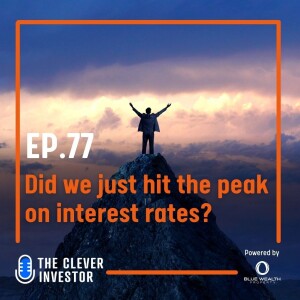
The RBA's decision to keep interest rates unchanged at 4.1% was a welcome relief.
If we consider the CPI from January to May on an annualized basis, it is now below 2.8%. Additionally, there are still 12 previous rate hikes that have not fully impacted the economy.
Over the 12 months leading up to May 2023, inflation has significantly decreased from 6.8% to 5.6%, with a peak of 8.4% in December 2022.
This decline can largely be attributed to the base effect, where current prices are compared to higher prices from the previous 12 months.
Although it may not be a popular opinion, we believe that inflation will decrease more rapidly than what most people anticipate.
Historical trends show that extreme spikes in inflation tend to have a reflexive effect,
Within economics, reflexivity refers to the self-reinforcing effect of market sentiment, whereby rising prices attract buyers whose actions drive prices higher still until the process becomes unsustainable.
So put simply, they typically decrease as rapidly as they increased.
When the June CPI figures are released this month, we can expect to observe a sharp decline in inflation, provided there are no unexpected shocks.
While the RBA's current thinking may be unclear, one thing is certain: the pressure for further interest rate increases is diminishing, especially considering that the full impact of previous rate hikes is yet to be fully reflected in the data.
Many industry experts often compare interest rate levels in Australia to those in other countries based on a given level of inflation.
They argue that Australia's interest rates are not high enough given the inflation levels.
However, they tend to overlook the fact that Australia is one of the most vulnerable economies to changes in interest rates worldwide.
This vulnerability is primarily due to our substantial levels of household debt relative to disposable income, along with a majority of mortgages being on variable rates.
In comparison, the US has 90% of mortgages on 30-year fixed rates, with a considerably lower overall household debt level.
Higher interest rates tend to impact regional banks, commercial real estate, small businesses reliant on bank loans, and unprofitable tech companies more than households in Australia.
The risk of a recession remains significant, leading to questions about whether the RBA is adopting a strategy similar to that of the US Federal Reserve.
Despite the official mandate of promoting maximum employment and stable prices, every rate hiking cycle in the US has historically resulted in some form of economic disruption.
By analyzing their actions rather than their words, we might mistakenly perceive this as a deliberate tactic.
Creating some sort of economic failure allows for a resumption of rate cuts in an environment where inflation does not initially flow into general goods and services as measured by the CPI.
Instead, inflation would primarily manifest in asset prices, a consequence that policymakers seem unconcerned about.
Is an intentional plan ? or simply a result of incompetence? It doesn’t fundamentally change the situation.
It is worth noting that historically, the first rate cut has often signalled the beginning of a bull-run in the property market.
A bull-run or bull-market is an period of time when prices rise and investors are optimistic.
If on you daily walk with your dog see's you face to face with a real bull....we recommend you run.
And after that hit the like button please.
More Episodes
 2023-11-09
2023-11-09
 2023-11-01
2023-11-01
 2023-10-26
2023-10-26
 2023-10-12
2023-10-12
 2023-09-28
2023-09-28
 2023-09-21
2023-09-21
 2023-09-14
2023-09-14
 2023-08-24
2023-08-24
Create your
podcast in
minutes
- Full-featured podcast site
- Unlimited storage and bandwidth
- Comprehensive podcast stats
- Distribute to Apple Podcasts, Spotify, and more
- Make money with your podcast
It is Free
- Privacy Policy
- Cookie Policy
- Terms of Use
- Consent Preferences
- Copyright © 2015-2024 Podbean.com






